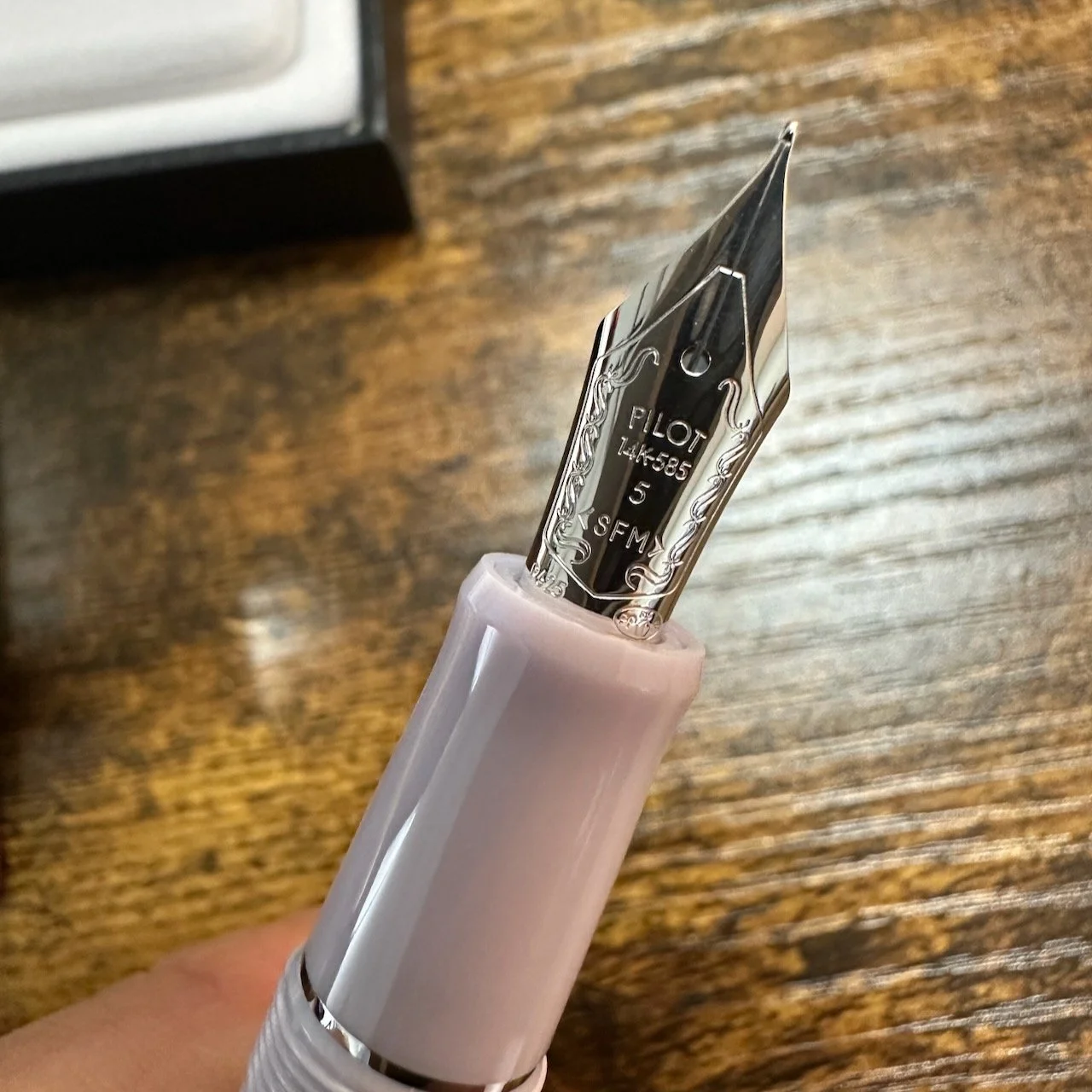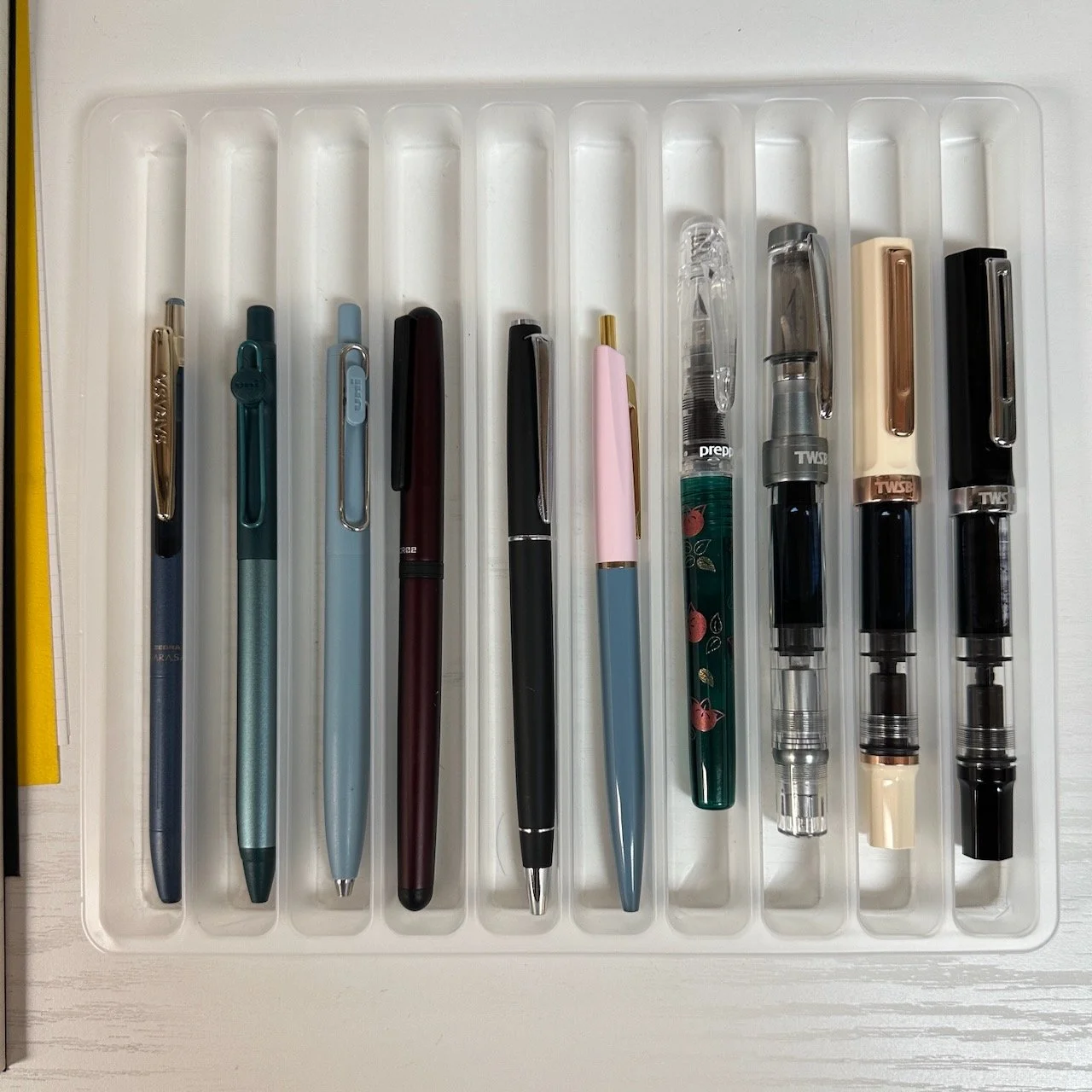I frequently get this question, and it’s one that I feel is important because it touches on one of the key reasons that so many of us get into fountain pens in the first place: They offer a much more comfortable writing experience over longer sessions, whether that means an extended journaling session, drafting a novel, or pulling together a longer professional document like a report or a legal brief. Personally, I think better when I’m working by hand offline, and over the years I’ve explored pretty much all the analog writing techniques out there. A fountain pen and a good writing pad remains my favorite.
Both of these grips are extremely comfortable for me to use.
What Factors Are Important for Comfortable Long-Form Writing?
If I’m preparing for a longer working session, I’ll consider three main factors when choosing a fountain pen: comfort, ink capacity, and the nib. In terms of comfort, I’m mainly talking about grip and balance. I have to be able to hold the pen easily for a long period of time, which means a comfortably grippy section and a pen barrel that doesn’t feel too weighted towards the front or the back of my hand. In terms of ink capacity, the pen doesn’t necessarily need to hold a ton of ink, but if I’m going away on a writing retreat or work trip I often will choose a piston filler just so I don’t have to worry about refilling (though a Pilot cartridge will last me a VERY long time). Finally, I’ll typically opt for a smooth medium nib, which gives me the least fussy writing experience and lets me “get lost” in whatever project I’m working on.
The Lamy 2000 (top) next to the Pilot Custom 74.
My Top Three Fountain Pens for Long Writing Sessions in My Personal Collection
Lamy 2000. Long-time readers of the blog won’t be surprised by my top choice. I tell anyone who will listen that if I had to get rid of all my fountain pens and keep just one, I would probably keep a Lamy 2000 (though depending on the rules I might try to keep multiple Lamy 2000s in different nib sizes). For whatever reason, this pen fits my hand perfectly. I love the lightweight Makrolon (brushed fiberglass composite) construction, which when posted has near perfect balance. And Lamy’s 14k medium nibs are among the best out there, in my opinion.
Pilot Custom 74. A close second to the Lamy 2000, Pilot’s Custom 74 is my cartridge-converter fountain pen of choice. I actually use refilled Pilot cartridges more often than Pilot converters, given how much ink they hold. The Custom 74 is another one of those pens that seems to mold itself to my grip, to where I can write with this pen for hours with very little hand fatigue.
Leonardo Momento Zero. The Momento Zero has a similar shape to the Lamy 2000, perhaps slightly larger, and if you prefer an even larger pen you can always opt for the Momento Zero Grande. Personally, the standard size fits my hand better than the Grande. Leonardo mainly uses JoWo nibs, which are reliable, if unspectacular, writers. As I mentioned above, sometimes when you want to get lost in a project, choosing a somewhat boring nib over a temperamental needlepoint or an exotic grind lets you focus more on the project itself than the tool you’re using.
What About Budget-Friendly Choices?
The three pens I’ve chosen above are big purchases, and those looking to experiment with fountain pens for the first time probably don’t want to splurge on a $200+ gold-nib fountain pen that they don’t necessarily know if they’ll like. Two pens that I’ve used in the past for travel writing (in places I didn’t necessarily want to take an expensive pen) are the ubiquitous TWSBI ECO and the even more inexpensive Pilot Kakuno (complete with smiley-face nib). Despite garnering reputations as “beginner” fountain pens, these are excellent low-cost writing instruments. I consider both well-balanced with reliable nibs.
Conclusions and Further Reading
There’s no real one-size-fits all analysis here. I can offer my recommendations, as I frequently do at shows and in the shop, but choosing a fountain pen that you can write with for long periods of time takes a lot of research and personal experimentation to determine what meets your needs and preferences. One resource you may find helpful is the “Workhorse Pens” series of articles that I’ve written over the years. Do you have a favorite pen for longer writing sessions? Tell us about it in the comments below!
I try to periodically answer questions from readers and customers that frequently appear in my inbox, social media DMs, and customer questions. You’re always welcome to stop by our store and talk to me in person, and I maintain a FAQ (Ask TGS) section on the site. If you enjoy our content, we are supported entirely by purchases from the T.G.S. Curated Shop and pledges via the T.G.S. Patreon Program.

